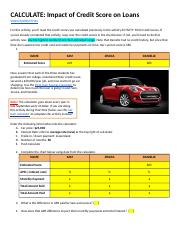
What is your best credit usage ratio 1% to 10% is the best range. Next, 30% and lower are recommended. Start with less than 50%. Under 80% is even better. You can read our article about the best credit utilization ratio to help you get a better understanding of your credit score. This will help you strike the perfect balance between risk and affordability. You'll be amazed at how much you can save by having a low credit utilization.
1% to 10%
While 0% may not be the best credit utilization ratio, it is better than using all your limit. You should aim for 10% to 30%. This will improve credit scores. Despite popular belief, 0% utilization doesn't build your payment history, which is the most significant factor in determining your credit score. So the goal should be somewhere in between 10% and 30%. Here are some tips that will help you improve credit scores if this is your first time.
30%
Experts recommend that the best credit utilization ratio is thirty percent. This means that, if you have a $1,000 credit line, you should have no more than $300 owing. A thirty percent credit utilization ratio is also appropriate when using multiple credit cards. It is important to learn how to calculate the ratio for each credit card and to keep it consistent. A good credit score can be maintained by keeping your balance under 30 percent.

Lower than 50%
If your credit score does not exceed five hundred, you might be eligible for a low credit utilization ratio. As a general rule, keep your credit utilization to 30 percent or below. However, your actual credit amount will depend on the number of purchases you make each year. Your credit utilization ratio should be below fifty percent. You shouldn't use credit cards for emergency situations. To get your credit score back to the desirable range, you can reduce the number of credit cards you currently have.
Below 80%
Credit utilization represents 30% of your credit score. Therefore, it is important to keep your ratio below 80%. You should be able maintain a balance of five to ten percent on your revolving line of credit. This means that if you have $10,000 in credit, you should be capable of maintaining a balance between $500 and $1,000. However, if you're unable to maintain this balance, it could negatively impact your score.
0%
A 0% credit utilization ratio is ideal. Although it's not the best, it's better than a high usage rate. A 30% utilization is equivalent of a B+ grade. A utilization of 29% equals a C. Avoid carrying credit card debt to maintain this balance. Here are some tips to increase your credit score and keep your credit utilization rate at 0%.
Anything less than 30%
To boost your credit score, keep your utilization rate under 30%. There are several ways to achieve this goal, and any one of them will help. To find out how much credit you have, you can either use a credit utilization calculator or a credit monitoring service. This will allow you to view your credit score and credit utilization ratio. While paying off your credit card may seem like a bad move, it can actually help your credit score.

Avoid applying for multiple credit cards or loans at the same time
It is bad for credit scores to apply for multiple loans or credit cards simultaneously. This makes you look like a high-risk borrower and lenders will likely do more credit checks. You will be able to have more debt than you think, which can not only hurt your credit score. Having multiple credit cards can negatively impact your credit score. It is best to keep your credit card debts at a minimum and not apply for any new cards simultaneously.
FAQ
Which investment vehicle is best?
There are two main options available when it comes to investing: stocks and bonds.
Stocks are ownership rights in companies. Stocks have higher returns than bonds that pay out interest every month.
You should invest in stocks if your goal is to quickly accumulate wealth.
Bonds are safer investments than stocks, and tend to yield lower yields.
There are many other types and types of investments.
They include real estate, precious metals, art, collectibles, and private businesses.
Which fund is best for beginners?
When investing, the most important thing is to make sure you only do what you're best at. FXCM is an excellent online broker for forex traders. If you want to learn to trade well, then they will provide free training and support.
If you do not feel confident enough to use an online broker, then try to find a local branch office where you can meet a trader face-to-face. You can also ask questions directly to the trader and they can help with all aspects.
Next is to decide which platform you want to trade on. CFD platforms and Forex trading can often be confusing for traders. Both types of trading involve speculation. Forex is more profitable than CFDs, however, because it involves currency exchange. CFDs track stock price movements but do not actually exchange currencies.
It is therefore easier to predict future trends with Forex than with CFDs.
Forex is volatile and can prove risky. CFDs are preferred by traders for this reason.
We recommend that Forex be your first choice, but you should get familiar with CFDs once you have.
How do I know if I'm ready to retire?
It is important to consider how old you want your retirement.
Do you have a goal age?
Or would it be better to enjoy your life until it ends?
Once you have determined a date for your target, you need to figure out how much money will be needed to live comfortably.
Then, determine the income that you need for retirement.
Finally, you must calculate how long it will take before you run out.
Statistics
- 0.25% management fee $0 $500 Free career counseling plus loan discounts with a qualifying deposit Up to 1 year of free management with a qualifying deposit Get a $50 customer bonus when you fund your first taxable Investment Account (nerdwallet.com)
- If your stock drops 10% below its purchase price, you have the opportunity to sell that stock to someone else and still retain 90% of your risk capital. (investopedia.com)
- Most banks offer CDs at a return of less than 2% per year, which is not even enough to keep up with inflation. (ruleoneinvesting.com)
- They charge a small fee for portfolio management, generally around 0.25% of your account balance. (nerdwallet.com)
External Links
How To
How to Save Money Properly To Retire Early
When you plan for retirement, you are preparing your finances to allow you to retire comfortably. This is when you decide how much money you will have saved by retirement age (usually 65). You also need to think about how much you'd like to spend when you retire. This includes things like travel, hobbies, and health care costs.
You don't have to do everything yourself. Financial experts can help you determine the best savings strategy for you. They'll examine your current situation and goals as well as any unique circumstances that could impact your ability to reach your goals.
There are two main types: Roth and traditional retirement plans. Roth plans allow you put aside post-tax money while traditional retirement plans use pretax funds. It depends on what you prefer: higher taxes now, lower taxes later.
Traditional Retirement Plans
A traditional IRA allows pretax income to be contributed to the plan. If you're younger than 50, you can make contributions until 59 1/2 years old. If you want your contributions to continue, you must withdraw funds. After turning 70 1/2, the account is closed to you.
If you have started saving already, you might qualify for a pension. These pensions vary depending on where you work. Some employers offer matching programs that match employee contributions dollar for dollar. Other employers offer defined benefit programs that guarantee a fixed amount of monthly payments.
Roth Retirement Plan
Roth IRAs have no taxes. This means that you must pay taxes first before you deposit money. After reaching retirement age, you can withdraw your earnings tax-free. However, there are limitations. For example, you cannot take withdrawals for medical expenses.
Another type of retirement plan is called a 401(k) plan. These benefits may be available through payroll deductions. Employer match programs are another benefit that employees often receive.
401(k), plans
Employers offer 401(k) plans. They let you deposit money into a company account. Your employer will automatically pay a percentage from each paycheck.
The money you have will continue to grow and you control how it's distributed when you retire. Many people decide to withdraw their entire amount at once. Others spread out distributions over their lifetime.
There are other types of savings accounts
Some companies offer additional types of savings accounts. TD Ameritrade allows you to open a ShareBuilderAccount. With this account, you can invest in stocks, ETFs, mutual funds, and more. In addition, you will earn interest on all your balances.
At Ally Bank, you can open a MySavings Account. This account allows you to deposit cash, checks and debit cards as well as credit cards. You can also transfer money to other accounts or withdraw money from an outside source.
What to do next
Once you have decided which savings plan is best for you, you can start investing. Find a reliable investment firm first. Ask friends or family members about their experiences with firms they recommend. Online reviews can provide information about companies.
Next, decide how much to save. This step involves figuring out your net worth. Net worth includes assets like your home, investments, and retirement accounts. It also includes liabilities such debts owed as lenders.
Once you know your net worth, divide it by 25. This number will show you how much money you have to save each month for your goal.
For instance, if you have $100,000 in net worth and want to retire at 65 when you are 65, you need to save $4,000 per year.